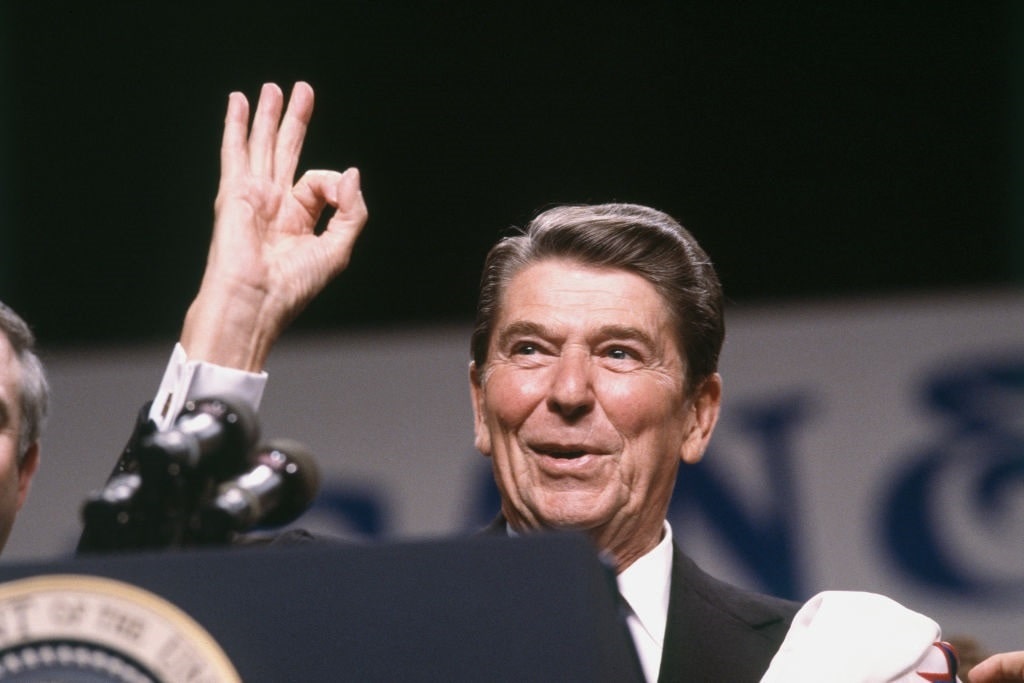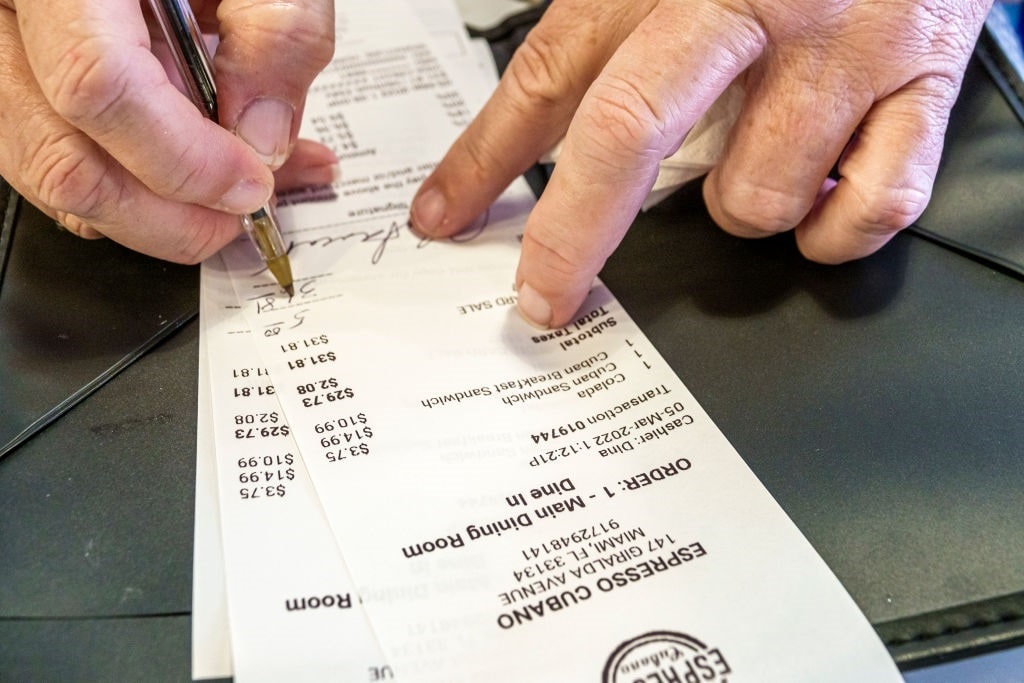White House Press Secretary Karine Jean-Pierre was recently asked if the administration had any response to the national debt hitting another milestone of $34 trillion. Her response? Blame the Republicans. She presented the argument that the GOP’s tax cuts accounted for about 90% of the growth, which seemed like a random figure to toss out there. Of course, none of the reporters pushed back on this assertion. So, is she accurate? As is typically the case, no.
Debt and Tax Cuts
In recent weeks, Democrats have asserted that tax cuts have led to skyrocketing budget deficits and a soaring national debt. On the surface, this might seem to make sense. However, a deeper dive into the numbers shows that it is barely close to the truth. Since the 1980s, when there has been landmark legislation to reduce tax rates, federal revenues have popped. This is generally known as the Laffer Curve. As President Joe Biden likes to say, “The proof is in the pudding you eat.”

Ronald Reagan (Photo by jean-Louis Atlan/Sygma via Getty Images)
Under former President Ronald Reagan, there were two major tax cuts: 1981 and 1986. The first round led to a 15% increase in tax receipts. The second bout produced a 39% jump in revenues. Former President George W. Bush also approved two editions of tax cuts (2001 and 2003). Until the global financial crisis, these fiscal policies resulted in a 61% spike in federal revenues, funds that were blown on two wars, entitlement expansions, and other statist endeavors. In 2018, then-President Donald Trump’s tax cuts went into effect, netting Washington a 9% boost to the government coffers.
Today, the US government is collecting about $5 trillion per year. The problem? Politicians are spending roughly $7 trillion, creating deficits of $2 trillion a year. So, no, it is not tax cuts that are fueling the dramatic increase in the national debt. Instead, federal spending has exploded by 870% since Reagan’s first series of tax cuts. It has been said repeatedly: Washington does not have a revenue problem; it has a spending problem.
Just Charge It, Baby!
Total consumer credit had its biggest month of 2023 in November, surging by $23.7 billion, up from a paltry $5.13 billion in October, according to new Federal Reserve data. This topped the consensus estimate of $9 billion. The jump was primarily driven by a $19.1 billion surge in revolving credit, such as credit cards, the second-largest increase on record. Non-revolving credit, like auto and student loans, climbed by $1.6 billion.
In other words, consumers inserted, swiped, and tapped like there was no tomorrow at the start of the holiday shopping season.
Over the last several months, consumers appeared to be taking it easy with the pieces of plastic as they were already stretched to the max with soaring interest payments. But with a low personal savings rate, half the country living paycheck to paycheck, and consumers’ purchasing power wiped out, can anyone blame the public for throwing caution to the wind?
A Nail in Oil’s Coffin?
Crude oil prices had a terrific start to 2024, rallying about 3% to around $74 a barrel on the New York Mercantile Exchange in the first week of trading. For bullish investors, many trends were brewing as the world flipped the calendar to 2024: chaos in the Middle East, frigid temperatures in North America, and the possibility of averting a global recession. Well, all this was chucked into the garbage bin as Saudi Arabia might have put the nail in oil’s coffin (for now).
State-owned Saudi Aramco announced that it would trim the price of its February oil deliveries for all buyers, including Asia (its largest market), by $2 to $1.50 per barrel above the benchmark. This signaled to global energy markets that Riyadh is fearful of waning international demand amid slowing economic conditions, launching a 4.1% selloff in West Texas Intermediate contracts.
At the same time, Reuters released the results of a new survey that suggested members of the Organization of the Petroleum Exporting Countries (OPEC) might have produced more crude than what the cartel agreed. The newswire’s data project that output was 27.88 million barrels per day in December, up 70,000 barrels a day from November.
Despite the Biden administration’s narrative of a soft landing being achieved, Phil Flynn, an energy strategist at The PRICE Futures Group, contended that the volatility in oil markets might suggest something else. “The recent bout of selling was caused in part by the fact that Saudi Arabia lowered their official selling price for oil to all markets is raising concerns about global demand,” he wrote in a daily research note. “While it is possible that the price reduction was to maintain market share in the face of production cuts, the market is taking it as a clear sign that the economy is slowing. Maybe the landing might not be so soft.”
The good news is that this could cushion the inflation blow. The bad news is that a crash in energy prices could be the path to a downturn. Of course, the way oil has been trading over the past four years, anything could trigger another rally or crash in 2024.




